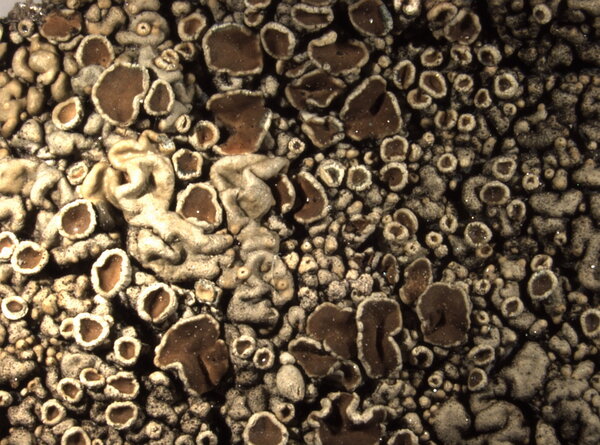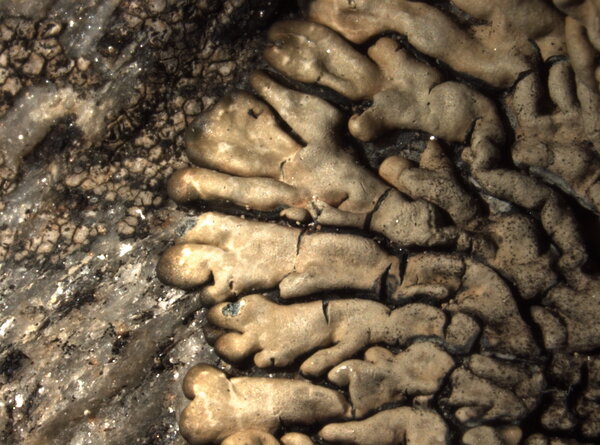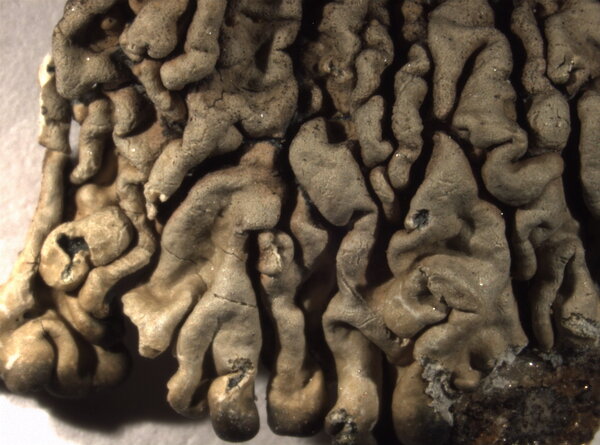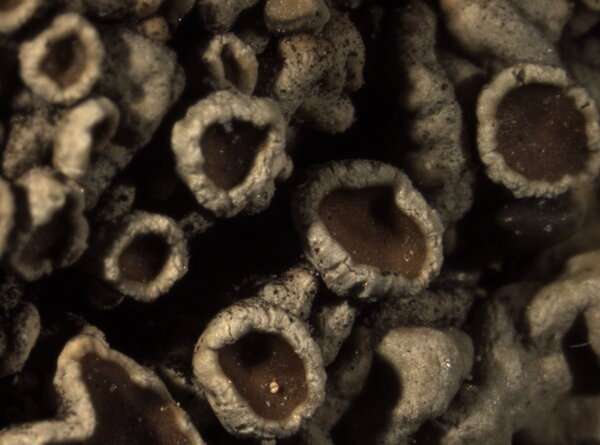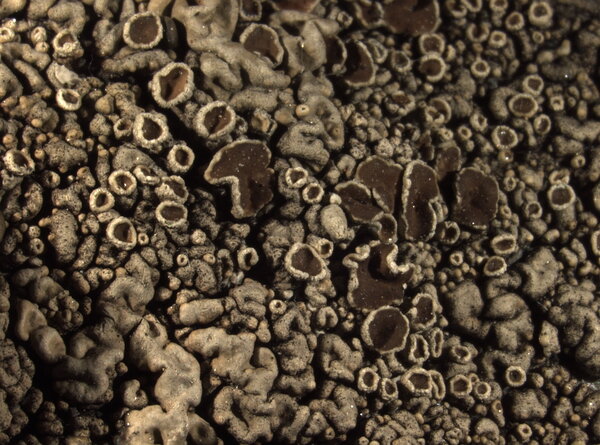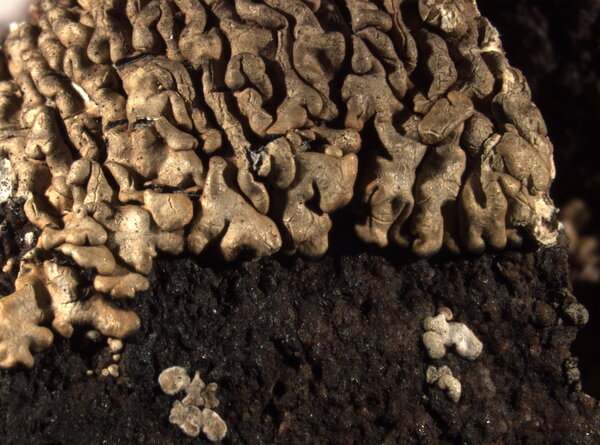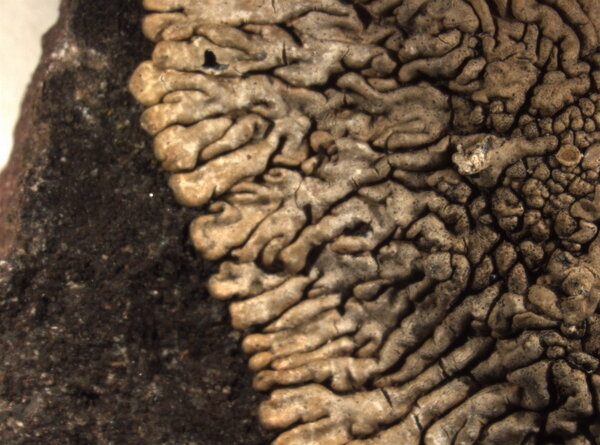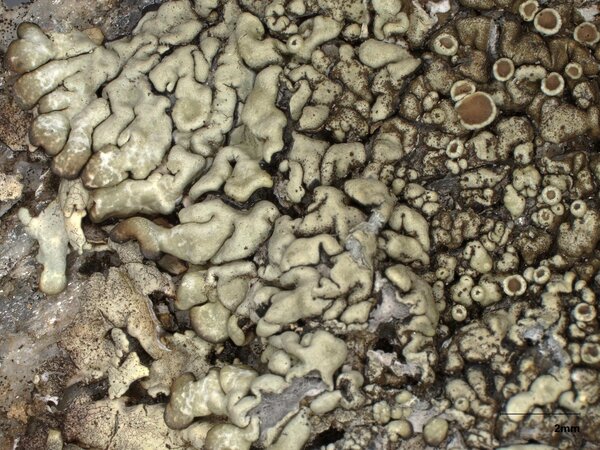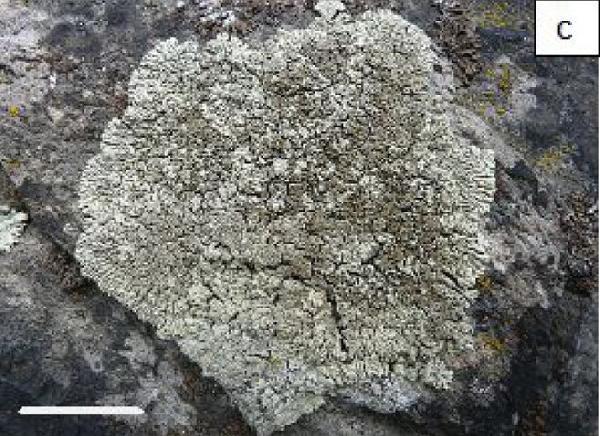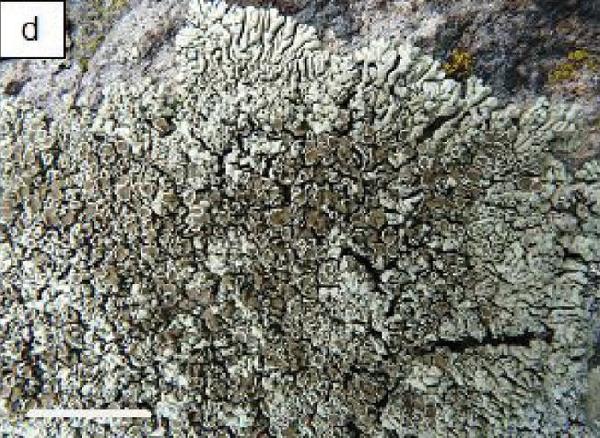Protoparmeliopsis garovaglii (Körb.) Arup, Zhao Xin & Lumbsch
in Zhao Xin & al., Fungal Divers., 78: 301, 2016. Basionym: Placodium garovaglii Körb. - Parerga Lichenol.: 54, 1865.
Synonyms: Lecanora cascadensis H. Magn.; Lecanora garovaglii (Körb.) Zahlbr.; Lecanora nevadensis H. Magn.; Placodium peruvianum Müll. Arg.; Squamaria garovaglii (Körb.) Anzi
Distribution: N - Ven, TAA (Calatayud & al. 2013), Lomb (Szczepańska & al. 2019), Piem (Clerc & al. 1999, Isocrono & al. 2003), VA (Piervittori & Isocrono 1999, Matteucci & al. 2015c).
Description: Thallus crustose-placodioid, episubstratic, areolate and 0.5-2(-3) mm thick in central parts, rather loosely attached, epruinose to patchily pruinose, greenish yellow to grey-yellowish green, often darker at lobe-tips and grey-green in central parts, forming rosettes to 6 cm and more in diam., but often several thalli merging to cover larger surfaces. Central areoles contiguous, 0.3-1.5 mm wide, slightly to strongly convex; marginal lobes 4-8 mm long, 0.5-1.5 mm wide, strongly and irregularly convex, sinuous, often with transversal cracks, partially hollow inside. Upper cortex 15-50 µm thick, inspersed with yellowish granules soluble in K; medulla white, very loose, often becoming hollow in center. Apothecia lecanorine, sessile and constricted at base, 0.7-2 mm across, with a reddish brown to finally rarely blue-black, flat, epruinose disc and a 0.1-0.2 mm thick, finally excluded thalline margin, with a conspicuous parathecial ring. Thalline exciple corticate, paraplectenchymatous, the algal layer extending below the hypothecium; proper exciple colourless, prosoplectenchymatous, 15-25 µm thick; epithecium pale orange to dark brown, inspersed with fine granules soluble in K and insoluble in N, 10-25 µm high; hymenium colourless, 50-65 µm high, I+ blue; paraphyses coherent, with clavate, 2-3 mm wide apical cells; hypothecium colourless. Asci 8-spored, elongate-clavate, very thin-walled, with a K/I+ blue, tall tholus penetrated by a faintly amyloid apical cushion, the wall K/I-, surrounded by a K/I+ blue outer layer, Lecanora-type. Ascospores 1-celled, hyaline, ellipsoid to broadly ellipsoid, 7-12 x 5-7 µm. Pycnidia immersed, dark around the ostiole. Conidia filiform, (20-)25-35 µm long. Photobiont chlorococcoid. Spot tests: K- or K+ pale yellow, C-, KC+ pale yellow, P-. Chemistry: cortex with usnic acid (major), placodiolic and/or isousnic acids (minor); medulla usually with zeorin and unidentified terpenoids.Note: a circumpolar, arctic-alpine to boreal-montane species found on basic siliceous rocks; apparently restricted to the Alps, especially at low altitudes in warm-dry valleys. The species name is often spelled garovaglioi, but the latinised name of Santo Garovaglio (who wrote most of his works in Latin) was Garovaglius, whose genitive is garovaglii. For further details see Ryan & Nash (1993) and Szczepańska & al. (2019).
Growth form: Crustose placodiomorph
Substrata: rocks
Photobiont: green algae other than Trentepohlia
Reproductive strategy: mainly sexual
Subcontinental: restricted to areas with a dry-subcontinental climate (e.g. dry Alpine valleys, parts of Mediterranean Italy)
Commonnes-rarity: (info)
Alpine belt: absent
Subalpine belt: very rare
Oromediterranean belt: absent
Montane belt: very rare
Submediterranean belt: rare
Padanian area: absent
Humid submediterranean belt: absent
Humid mediterranean belt: absent
Dry mediterranean belt: absent
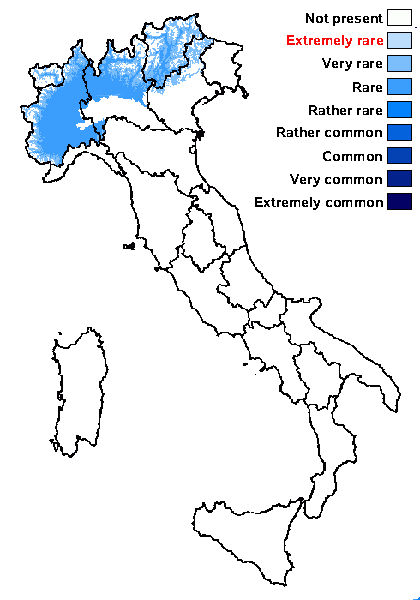
Predictive model
Herbarium samples


P.L. Nimis; Owner: Department of Life Sciences, University of Trieste
Herbarium: TSB (26019)
2003/03/12
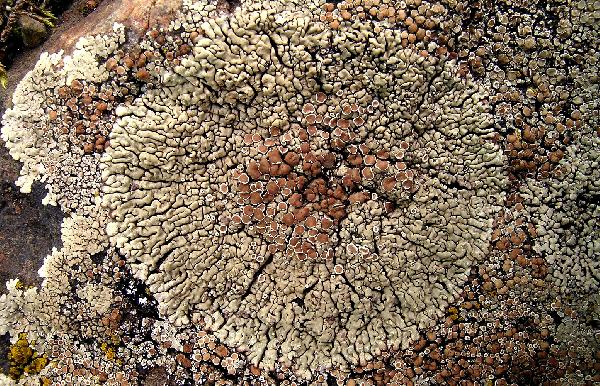
Ulrich Kirschbaum CC BY-SA 4.0 - Source: https://www.thm.de/lse/ulrich-kirschbaum/flechtenbilder
Central Europe; Germany: Hesse. (Coll/ident: Eichler/Cezanne).
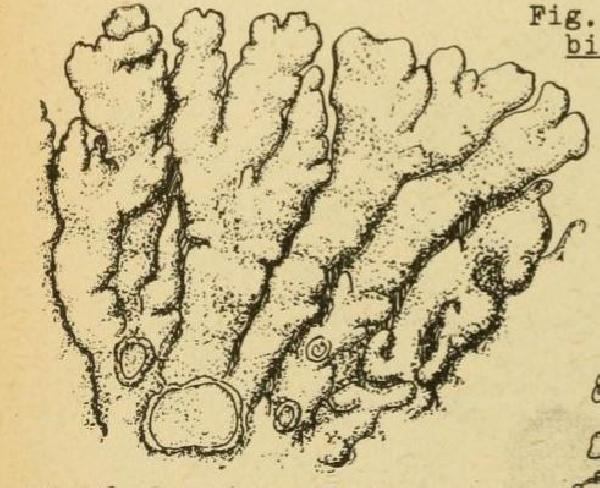
source: Poelt J. (1958) Mitt. Bot. Staatssamml. München 2: 411-589 Die lobaten Arten der Flechtengattung Lecanora Ach. s.ampl. in der Holarktis.
Growth form: Crustose placodiomorph
Substrata: rocks
Photobiont: green algae other than Trentepohlia
Reproductive strategy: mainly sexual
Subcontinental: restricted to areas with a dry-subcontinental climate (e.g. dry Alpine valleys, parts of Mediterranean Italy)
Commonnes-rarity: (info)
Alpine belt: absent
Subalpine belt: very rare
Oromediterranean belt: absent
Montane belt: very rare
Submediterranean belt: rare
Padanian area: absent
Humid submediterranean belt: absent
Humid mediterranean belt: absent
Dry mediterranean belt: absent

Predictive model
| Herbarium samples |


P.L. Nimis; Owner: Department of Life Sciences, University of Trieste
Herbarium: TSB (26019)
2003/03/12

Ulrich Kirschbaum CC BY-SA 4.0 - Source: https://www.thm.de/lse/ulrich-kirschbaum/flechtenbilder
Central Europe; Germany: Hesse. (Coll/ident: Eichler/Cezanne).

 INDEX FUNGORUM
INDEX FUNGORUM
 GBIF
GBIF
 DOLICHENS
DOLICHENS

